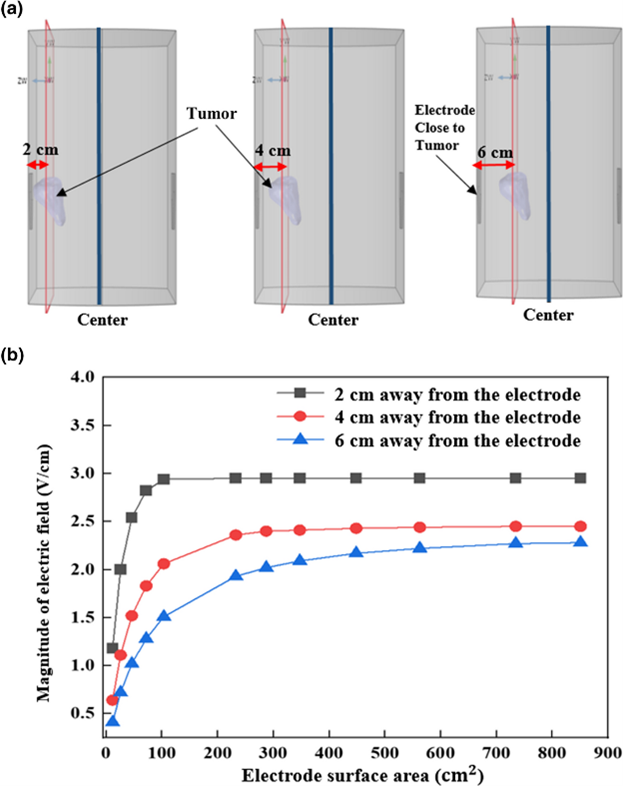 작성일 : 23-05-16 16:18
작성일 : 23-05-16 16:18
|
Feasibility of a method for optimizing the electrode array structure in tumor-treating fields therapy
|
 |
|
글쓴이 :
관리자
 조회 : 541
|

The
present study investigated electrode array structures that maximize the
therapeutic electric field intensity to tumors with different shapes and
locations, while minimizing electric field intensity to the surrounding organs
at risk (OARs). A human body phantom model was created from magnetic resonance
images of a patient and divided into regions including a tumor and OARs. The
shapes and sizes of the electrode arrays were altered for tumors differing in
shape and location, and these electrode array structures were tested in the
phantom. Use of a conformal electrode array based on the shape of the tumor
maintained therapeutic electric field intensity to the tumor while reducing
electric field intensity to the surrounding OARs by approximately 18%. Although
the electric field intensity delivered to the tumor was proportional to the
size of the electrode array, it was saturated at a critical area. Simulation
results showed that optimal sizes of electrode arrays for specific tumors
located at depths of 2 cm, 4 cm and 6 cm were 91, 273 and 830 cm2,
respectively, indicating that the optimal size of the electrode array is
proportional to the depth of tumor in the phantom. These results suggest that a
tumor location-dependent optimal ratio between the size of the electrode array
and the size of the individual electrodes could be calculated. In summary, this
study indicated that customizing the electrode array structure to individual
tumors can markedly increase the electric field intensity delivered to the
tumor while minimizing the intensity delivered to OARs.
Geon Oh, Yongha Gi, Heehun Sung, Hyunwoo Kim, Jaehyeon Seo & Myonggeun Yoon
Department of Bioengineering, Korea
University, Seoul, 02841, Republic of Korea
Myonggeun Yoon
FieldCure Ltd, Seoul, 02481, Republic of
Korea
Yunhui Jo
Institute of Global Health Technology,
Korea University, Seoul, 02841, Republic of Korea
J. Korean Phys. Soc. 81, 1020–1028
(2022).
|
|

 HOME > Research
HOME > Research

 HOME > Research
HOME > Research